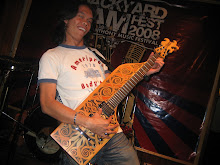
Bloodletting History
The history of barber poles dates back to the 7th or 8th century in Europe. Today we think of barbers and doctors as being in completely separate professions, but in medieval Europe, hair cutting and treatment of injuries were done by barber surgeons, who employed some crude medical techniques that would have many of us fleeing in terror today…
Although bloodletting treatments ended in the 19th century, barber poles remain as a symbol of this gruesome past.
Business Separation
By the way, both barber surgeons and surgeons used the poles to mark their places of business, making them indistinguishable. In 1745, however, the surgeons formerly split from the barbers, after which laws required that surgeons used red and white poles, andbarbers used blue and white ones. There are lots of theories on what the blue colour represents, including that the colour combination was based on the French flag or the American stars and stripes. Another theory is that they represent blue veins.
Antique Barber Poles

Barber poles in very antique styles can be found around Japan, but actually they first arrived here when the country opened up to the West during the Meiji period, after the mechanism and design of barber poles had already been fully developed.

Another cute barber pole on a stand made in an antique style…

… and a new barber pole in old-school style.
